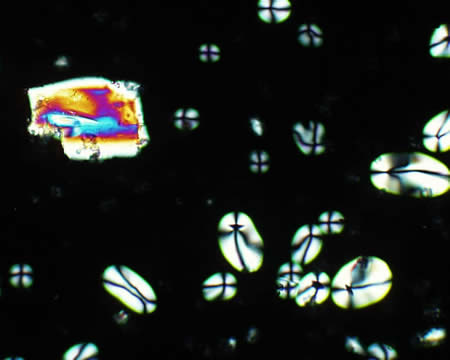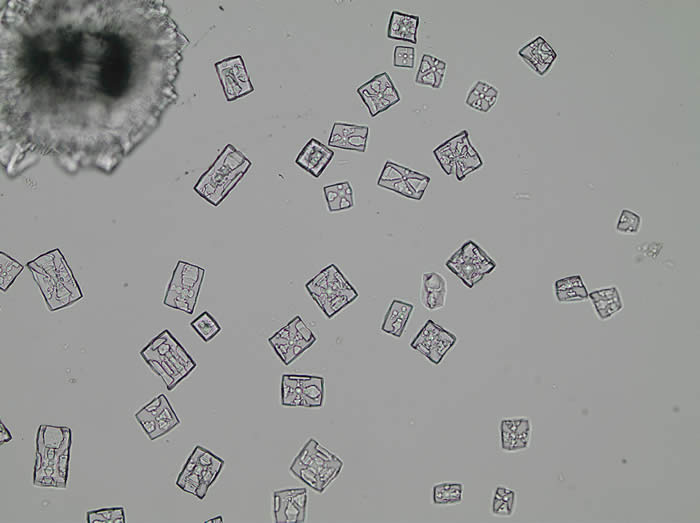Substance Identification

Image of sugar (sucrose) and starches using polarized light microscope
If an unidentified substance is found during an incident investigation, the lab can attempt to identify the substance or components in the substance to assist the investigator. If a source for the substance is suspected, a control sample should be submitted for comparison. Some typical substances that have been identified in the laboratory include ethylene glycol (antifreeze), acids, pesticides, potassium cyanide, building materials, food products and household products.
Substance identification examinations may include using physical measurements, chemical spot testing, microscopy, Fourier transform infrared spectrometry (FTIR), scanning electron microscopy with energy dispersive spectrometry (SEM/EDS), Raman spectroscopy, x-ray fluorescence (XRF), and gas chromatography/ mass spectrometry (GC/MS).

Photomicrograph of potassium cyanide recrystallized from water and glycerin mixture